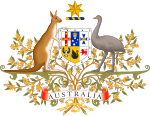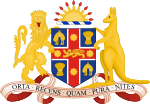The Reserve Bank of Australia (RBA) is Australia's central bank and banknote issuing authority. It has had this role since 14 January 1960, when the Reserve Bank Act 1959 removed the central banking functions from the Commonwealth Bank.The bank has the responsibility of providing services to the Government of Australia in addition to also providing services to other central banks and official institutions. It currently consists of the Payments System Board, which governs the payments system policy of the bank, and the Reserve Bank Board, which governs all other monetary and banking policies of the bank.Both boards consist of members of both the bank, the Treasury, other Australian government agencies, and leaders of other institutions that are part of the economy. The structure of the Reserve Bank Board has remained consistent ever since 1951, with the exception of the change in the number of members of the board. The governor of the Reserve Bank of Australia is appointed by the Treasurer and chairs both the Payment Systems and Reserve Bank Boards and when there are disagreements between both boards, the governor resolves them.From the middle of the 19th century into the 1890s, the prospects for the forming of a national bank grew. In 1911, the Commonwealth Bank was established, but did not have the authority to print notes, which was a power that was still reserved to the Treasury. A movement toward reestablishing the gold standard occurred after World War I, with John Garvan leading various boards in contracting the money supply on the route to doing so, and the gold standard was instituted for both the British pound sterling and the Australian pound in 1925.During the Great Depression, the Australian pound became devalued, no longer worth the same as the pound sterling, and formally departed from the gold standard with the Commonwealth Bank Act of 1932. Legislation in 1945 led to regulation of private banks which Herbert Coombs was opposed to, and when he became governor in 1949, he gave them more overall control over their institutions. When the monetary authorities implemented the advice of Coombs to have a flexible interest rate, it allowed the bank to rely more on open market operations. In 1980 the issue of short-term government bonds – Treasury notes of 13 and 26 weeks duration – changed from a tap system, in which the price was set, to a tender system in which the volume of stock was set and the price determined by the market. Soon afterwards the tender system was extended to the issue of longer-term government bonds.
The float of the Australian dollar happened in 1983, around the same period of time that the financial system in Australia was deregulated. Administration of the banks was transferred in 1998 from the bank to the Australian Prudential Regulation Authority and the Payments System Board was created, while the bank was given power within the board in the same year. The current governor of the Reserve Bank is Philip Lowe, who succeeded Glenn Stevens as governor on 18 September 2016.In May 2022, the bank increased the nation's interest rates for the first time in more than a decade. This move was designed to combat the inflation, right before the election that is heavily focused on increased costs of living.










